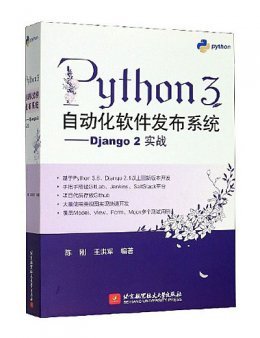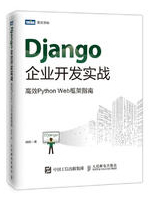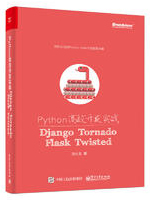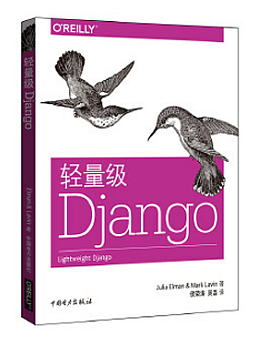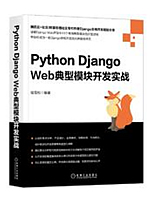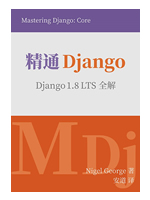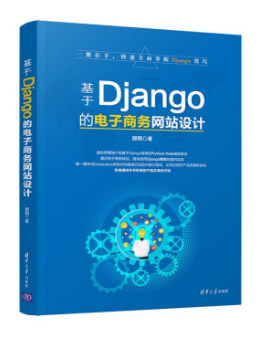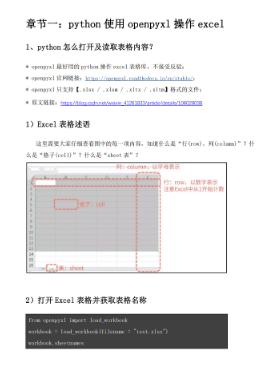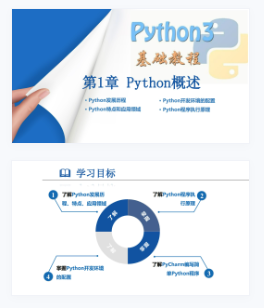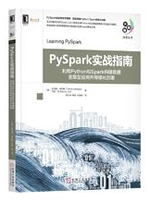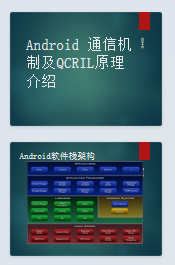给大家整理一篇相关的编程文章,网友须奇正根据主题投稿了本篇教程内容,涉及到django、组合搜索、django组合搜索实现过程详解(附代码)相关内容,已被424网友关注,涉猎到的知识点内容可以在下方电子书获得。
django组合搜索实现过程详解(附代码)
一.简介
- # 组合搜索
- # 技术方向:自动化,测试,运维,前端
- # 分类:Python Linux JavaScript OpenStack Node.js GO
- # 级别:初级 中级 高级 骨灰级
有4张表:
Direction(技术方向标),Classification(技术分类表),Level(难度级别表),Video(视频表)
它们的关系是:
Direction与Classification多对多关系
Video与Classification,Level是一对多关系
最终要实现的结果如下图:
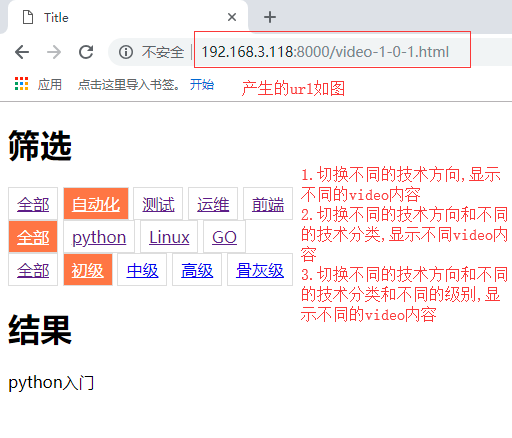
二.models代码
class Direction(models.Model):
"""
技术方向:自动化,测试,运维,前端
"""
name = models.CharField(verbose_name='名称', max_length=32)
classification = models.ManyToManyField('Classification')
class Meta:
# 重命名表名,不要自动添加的app名
db_table = 'Direction'
verbose_name_plural = '方向(视频方向)'
def __str__(self):
return self.name
class Classification(models.Model):
"""
分类:Python Linux JavaScript OpenStack Node.js GO
"""
name = models.CharField(verbose_name='名称', max_length=32)
class Meta:
db_table = 'Classification'
verbose_name_plural = '分类(视频分类)'
def __str__(self):
return self.name
class Level(models.Model):
title = models.CharField(max_length=32)
class Meta:
db_table = 'Level'
verbose_name_plural = '难度级别'
def __str__(self):
return self.title
class Video(models.Model):
status_choice = (
(1, '下线'),
(2, '上线'),
)
status = models.IntegerField(verbose_name='状态', choices=status_choice, default=1)
level = models.ForeignKey(Level)
classification = models.ForeignKey('Classification', null=True, blank=True)
weight = models.IntegerField(verbose_name='权重(按从大到小排列)', default=0)
title = models.CharField(verbose_name='标题', max_length=32)
summary = models.CharField(verbose_name='简介', max_length=32)
# img = models.ImageField(verbose_name='图片', upload_to='./static/images/Video/')
img = models.CharField(verbose_name='图片', max_length=32)
href = models.CharField(verbose_name='视频地址', max_length=256)
create_date = models.DateTimeField(auto_now_add=True)
class Meta:
db_table = 'Video'
verbose_name_plural = '视频'
def __str__(self):
return self.title
三.url路由代码
urlpatterns=[
url(r'^admin',admin.site.urls),
#利用的是有名分组的方法,分别获取不同的id
url(r'^video-(?P<direction_id>(\d+))-(?P<classification_id>(\d+))-(?P<level_id>(\d+)).html$', views.video,
name='video')
]
四.视图代码
def video(request,*args,**kwargs):
condition = {}
for k, v in kwargs.items():
temp = int(v)
kwargs[k] = temp
print(kwargs) # (?P<direction_id>(\d+))-(?P<classification_id>(\d+))-(?P<level_id>(\d+))
# 构造查询字典
direction_id = kwargs.get('direction_id')
classification_id = kwargs.get('classification_id')
level_id = kwargs.get('level_id')
# 获取所有的技术方向
direction_list = models.Direction.objects.all()
# 当没有选择技术方向时,就获取所有分类
if direction_id == 0:
class_list = models.Classification.objects.all()
# 当没有选择分类时,不做什么
if classification_id == 0:
pass
else:
# 否则就将分类id放入字典
condition['classification_id'] = classification_id
else:
# 当选择了技术方向id时,查询出该技术方向下的所有分类
direction_obj = models.Direction.objects.filter(id=direction_id).first()
class_list = direction_obj.classification.all()
# 只获取该方向下的分类id
vlist = direction_obj.classification.all().values_list('id')
# 下面的代码为了生成condition是传入的一对多查询id,如:{'classification_id__in': (1, 2, 3), 'level_id': 1}
if not vlist:
classification_id_list = []
else:
# 将vlist转换成列表
classification_id_list = list(zip(*vlist))[0]
if classification_id == 0:
condition['classification_id__in'] = classification_id_list
else:
if classification_id in classification_id_list:
condition['classification_id'] = classification_id
else:
#指定技术方向:[1,2,3] 分类:5
kwargs['classification_id'] = 0
condition['classification_id__in'] = classification_id_list
if level_id == 0:
pass
else:
condition['level_id'] = level_id
level_list = models.Level.objects.all()
video_list = models.Video.objects.filter(**condition)
# 技术方向的queryset对象列表
print(direction_list)
# 分类的queryset对象列表
print(class_list)
# 等级的queryset对象列表
print(level_list)
# video的queryset对象列表
print(video_list)
# 技术方向的id,分类的id,等级的id组成的字典
print(kwargs)
return render(
request,
'video.html',
{
'direction_list':direction_list,
'class_list':class_list,
'level_list':level_list,
'video_list':video_list,
'kwargs':kwargs,
}
)
五.模板代码
<!DOCTYPE html>
<html lang="en">
<head>
<meta charset="UTF-8">
<title>Title</title>
<style>
.condition a {
display: inline-block;
padding: 5px 8px;
border: 1px solid #dddddd;
}
.condition a.active {
background-color: coral;
color: white;
}
</style>
</head>
<body>
<div class="condition">
<h1>筛选</h1>
<div>
{% if kwargs.direction_id == 0 %}
{#反向解析#}
<a href="{% url " rel="external nofollow" rel="external nofollow" rel="external nofollow" rel="external nofollow" video" direction_id=0 classification_id=kwargs.classification_id level_id=kwargs.level_id %}"
class="active">全部</a>
{% else %}
<a href="{% url " rel="external nofollow" rel="external nofollow" rel="external nofollow" rel="external nofollow" video" direction_id=0 classification_id=kwargs.classification_id level_id=kwargs.level_id %}">全部</a>
{% endif %}
{% for item in direction_list %}
{% if item.id == kwargs.direction_id %}
<a href="{% url " rel="external nofollow" rel="external nofollow" rel="external nofollow" rel="external nofollow" video" direction_id=item.id classification_id=kwargs.classification_id level_id=kwargs.level_id %}"
class="active">{{ item.name }}</a>
{% else %}
<a href="{% url " rel="external nofollow" rel="external nofollow" rel="external nofollow" rel="external nofollow" video" direction_id=item.id classification_id=kwargs.classification_id level_id=kwargs.level_id %}">{{ item.name }}</a>
{% endif %}
{% endfor %}
</div>
<div>
{% if kwargs.classification_id == 0 %}
<a href="/video-{{ kwargs.direction_id }}-0-{{ kwargs.level_id }}.html" rel="external nofollow" rel="external nofollow" class="active">全部</a>
{% else %}
<a href="/video-{{ kwargs.direction_id }}-0-{{ kwargs.level_id }}.html" rel="external nofollow" rel="external nofollow" >全部</a>
{% endif %}
{% for item in class_list %}
{% if item.id == kwargs.classification_id %}
<a href="/video-{{ kwargs.direction_id }}-{{ item.id }}-{{ kwargs.level_id }}.html" rel="external nofollow" rel="external nofollow"
class="active">{{ item.name }}</a>
{% else %}
<a href="/video-{{ kwargs.direction_id }}-{{ item.id }}-{{ kwargs.level_id }}.html" rel="external nofollow" rel="external nofollow" >{{ item.name }}</a>
{% endif %}
{% endfor %}
</div>
<div>
{% if kwargs.level_id == 0 %}
<a href="/video-{{ kwargs.direction_id }}-{{ kwargs.classification_id }}-0.html" rel="external nofollow" rel="external nofollow" class="active">全部</a>
{% else %}
<a href="/video-{{ kwargs.direction_id }}-{{ kwargs.classification_id }}-0.html" rel="external nofollow" rel="external nofollow" >全部</a>
{% endif %}
{% for item in level_list %}
{% if item.id == kwargs.level_id %}
<a href="/video-{{ kwargs.direction_id }}-{{ kwargs.classification_id }}-{{ item.id }}.html" rel="external nofollow" rel="external nofollow"
class="active">{{ item.title }}</a>
{% else %}
<a href="/video-{{ kwargs.direction_id }}-{{ kwargs.classification_id }}-{{ item.id }}.html" rel="external nofollow" rel="external nofollow" >{{ item.title }}</a>
{% endif %}
{% endfor %}
</div>
</div>
<div>
<h1>结果</h1>
{% for row in video_list %}
<div>{{ row.title }}</div>
{% endfor %}
</div>
</body>
</html>
以上就是本文的全部内容,希望对大家的学习有所帮助,也希望大家多多支持码农之家。

